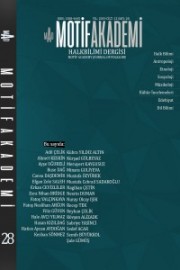ÇİFT BAŞLI KARTAL MOTİFİNİN TÜRK SANATINDAKİ YERİ VE ÇAĞDAŞ GİYSİ TASARIMLARINA YANSIMASI
THE DOUBLE HEADED EAGLE MOTIF IN TURKISH ART AND THE REFLECTION OF CONTEMPORARY CLOTHING DESIGNS
Author(s): Kezban Sönmez, Hale Avcı YılmazSubject(s): Fine Arts / Performing Arts, Customs / Folklore, ICT Information and Communications Technologies
Published by: Motif Halk Oyunları Eğitim ve Öğretim Vakfı
Keywords: Double-headed eagle; Turkish art; design; fashion; textile;
Summary/Abstract: Historical values and motifs that societies show as a reference point in the search for identity play an important role in the advancement of culture. The place of the double-headed eagle motif in Turkish culture stands out at this point. This motif, which originated in Mesopotamia, spread to Anatolia and has taken place in almost all cultures, points to divinity and the balance of opposing forces. In Turkish understanding of the universe, these characteristics are also observed in the perception of kut coming from heaven and the value given to the elements of nature in the belief of Sky God. In the depictions of birds of prey that appeared in the first Turkish works of the Islamic period, the mutual balance of opposing forces is mentioned, as in Kutatgu-bilig. The double-headed eagle motif was the most widely used in the Anatolian Seljuks, and was included in the Beyliks period carpets, which were in great demand in Europe. It is known that the motif, which is seen to be reflected in the Turkmen women's jewelry, is separated from the meaning of sacred mythological being and joins usage area of the public as a cultural symbol. It is possible to read some of the social cultures and movements through clothing styles. In this study; In addition to expressing the value of a deep-rooted traditional motif representing Turkish identity, it is aimed to present design proposals that will expand and extend its usage area. During the study; literature was searched, drawing programs such as Photoshop and Illustrator were used in the design sheet and pattern creation process, and various crafts and textile prints were planned to be used during production.
Journal: Motif Akademi Halkbilimi Dergisi
- Issue Year: 12/2019
- Issue No: 28
- Page Range: 1151-1167
- Page Count: 17
- Language: Turkish

